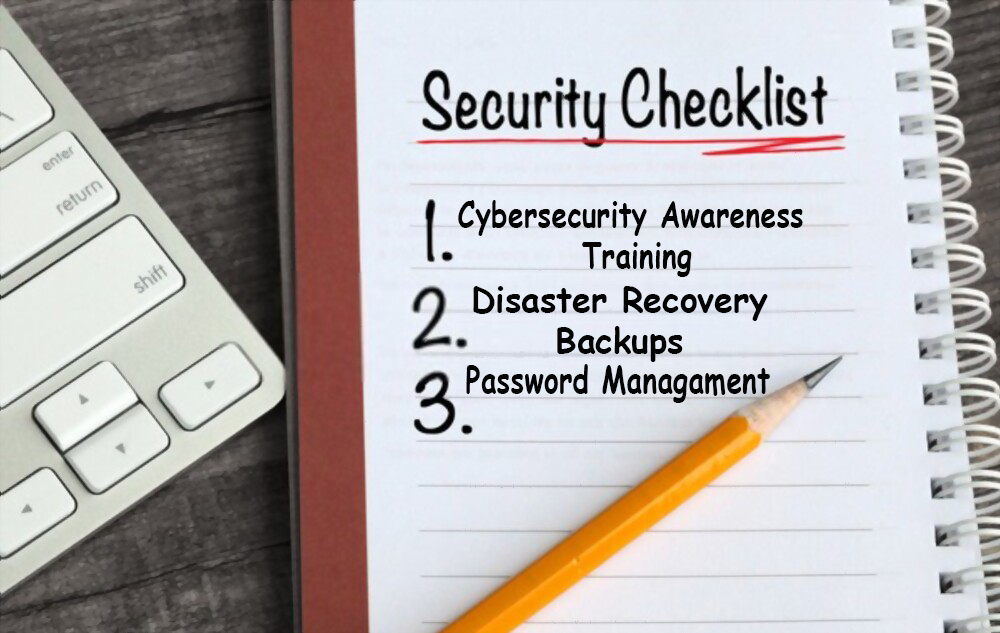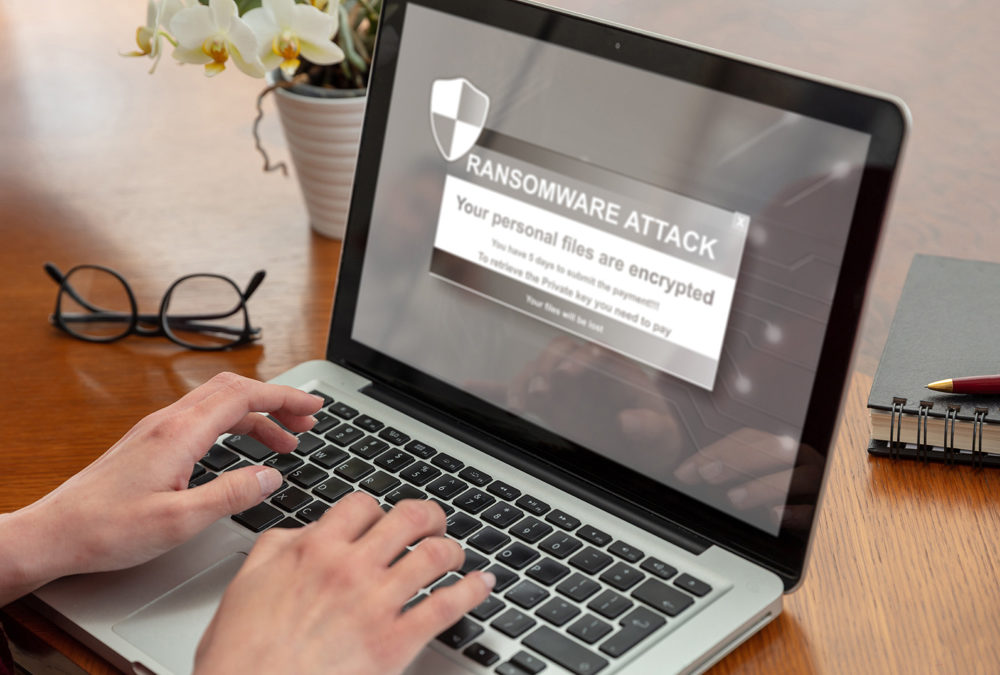Ransomware gangs have been rolling out attacks more frequently, affecting organizations worldwide. These attacks typically target sensitive data such as emails, financial information, and intellectual property, and we want to encourage ransomware victims to start to fight back.
While there are only a few types of ransomware, we’ve seen hundreds of modern ransomware strains and types of malware in the last decade alone. These infections usually start out small, targeting individual computers or groups of computers, and spread quickly across networks. Once it reaches critical mass, it begins encrypting files and demanding a ransom payment of millions of dollars in some cases.
This guide will go over what organizations should do immediately following a ransomware attack to minimize damage. It will cover critical questions like “How did my organization become infected?” and “What to do after a ransomware attack?”
We’ll also explain how to avoid future incidents by taking advantage of best practices and implementing robust security policies, and we’ll address whether you should pay the ransom.

Table of Contents
What To Do After a Ransomware Attack?
1. Call Your IT Team
If you’ve been hit with ransomware, you first should get ahold of your IT team to report the ransomware incident. Whether in-house or an MSP (managed service provider), they can help identify the source of the infection and take steps to prevent further outbreaks. They may be able to remove the malware from affected systems, restore backups, or even decrypt the encrypted files.
The sooner you contact them, the better your chance of recovering from this incident. They may be able to bring back your data using backups or decryption tools. If not, you will need to move forward with other recovery options.
2. Don’t Panic
When you find out that a ransomware attack has hit you, there are many things you might do. Some people panic, others try to figure out how much money they’ll lose, while others decide to pay the ransom demand. But none of those actions are beneficial. To protect yourself against further attacks, you must learn how to respond rationally and strategically.
The best way to avoid falling into emotional traps is to think about the situation logically and systematically. Start by determining whether the attacker succeeded in encrypting your files. If they did, you need to determine precisely how much damage they caused. Then, consider how much you value your data and your ability to conduct business. Finally, look at what happened to similar organizations in the same sector. This will give you insight into how successful attackers typically operate and allow you to formulate a strategy for dealing with future incidents.
3. Isolation
Ransomware attacks are becoming increasingly sophisticated, especially those targeting businesses. Many organizations find themselves dealing with multiple infections simultaneously. These attacks often spread quickly because they exploit vulnerabilities in existing systems. As a result, it becomes difficult to contain the damage once the malware spreads beyond the initial victim.
Organizations must stop the spread of the infection to combat these threats effectively. The first thing you’ll want to do is isolate the affected computer(s). This includes physically isolating the computer, isolating infected systems, limiting Internet access, and disabling network connections. If you don’t do anything else, just doing those three things will help keep the infection contained and prevent it from propagating further.
If you’re unsure how to perform basic tasks like rebooting, restarting networking, or shutting down Windows, many online resources explain how to do each step. Or better yet, call your IT team.

4. Backups
Backups play a crucial role in IT operations, especially during disaster recovery. However, they’re not immune to ransomware attacks. A recent survey found that nearly half of respondents had been hit with ransomware, and almost one-third reported losing data due to such incidents. This threat isn’t just limited to businesses; home users are often victims.
Ransomware attacks often target company backups because they’re easy targets for hackers. To prevent these attacks, companies must protect their backups by disconnecting them from the corporate networks or locking them up until the infections are resolved.
Ransomware attacks can occur anytime, so organizations need to have an effective plan in place for this. In addition to backing up data regularly, organizations should consider using offline media (such as USB drives) to store critical information.
5. Call the Authorities
In some cases, ransomware attacks can lead to more severe consequences than mere financial loss. For example, if a business has sensitive personal information stored on its computers, then a ransom demand could put that information at risk.
Organizations should always take precautions to ensure that no unauthorized individuals gain access to their systems. But sometimes, it’s necessary to involve law enforcement authorities to investigate and prosecute hackers who use ransomware to extort money from unsuspecting victims.
6. Start Investigating
Once you’ve stopped the ransomware infection from spreading further, you’ll need to figure out where the infection came from and what strain of ransomware it uses. You must also identify the attack vector—how did the attacker infiltrate your organization, and what strain was used? This step helps you pinpoint the source of the attack and understand whether you’re dealing with a targeted or widespread attack.
The most common way to find out about an attack is to look for signs of compromise within your network. Check logs and scan your system for malware if you see unusual activity. Look for indicators of compromise, like missing files or registry keys. Analyze any suspicious emails or attachments. Scanning email servers for malicious code is good practice because many organizations use Microsoft Exchange Server as a mail server.
If you don’t know where to start looking, ask yourself some questions. Do you have access to your endpoints? Have you noticed changes in behavior? Are there strange file names or extensions? Is there unauthorized software installed? Did someone call you complaining about problems?
You can also reach out to friends and family members who might have had similar experiences. They could have been victims of a phishing campaign or infected via a USB stick or virus. In either case, they likely saw something weird happen on their computers and may remember seeing messages asking them to pay money.
You’ll want to investigate further if you’ve found evidence of compromise. What are the chances that the attacker entered your environment? How much damage did they do? Was it just a test run or part of a more extensive operation?
Look for clues in the data left behind. Check for deleted files, registry entries, log files, and processes running under different account credentials: review event logs and security alerts for anything suspicious.

Should You Pay Ransom?
One of the most important considerations when dealing with ransomware is determining whether to pay the ransom to get the decryption key. This is especially true if the ransom payment is large enough to affect your bottom line. If people are willing to pay the ransom, there will always be criminals looking to profit from extortion.
While some experts believe that paying the ransom is always the best option, others say paying it might hurt you more than help.
The problem is that paying the ransom does not guarantee you won’t suffer future attacks. Many companies pay the ransom because they feel it’s better to avoid further damage than risk losing data. However, there’s no guarantee that paying the ransom will protect you against future attacks. You could make yourself a target simply by officially announcing that you paid the ransom. In short, paying the ransom isn’t always the best option.

Cyber Insurance
If you have cyber insurance, you’ll want to ensure you understand your coverage. Some policies only cover certain losses, while others provide complete protection. For example, one policy might cover the cost of restoring lost data but not hire a forensic expert to analyze the data. Make sure that you understand what your policy covers before you decide to pay the ransom.
It’s also worth noting that even if you have an effective policy, you still need to take steps to prevent future attacks. That means implementing strong password management practices, using anti-malware software, and keeping backups. If you fail to implement these basic precautions, you could face another attack anytime.

Return Ransom Notes to Sender
Here are some preventative measures you can take to avoid getting hit with ransomware and malware attacks:
- Use a security solution with endpoint detection. Endpoint detection security software can detect malware on computers and devices before it gets anywhere near your network. It helps you identify threats quickly so you can contain them.
- Keep all software up to date. When new software versions become available, patching ensures you keep your computer safe from known vulnerabilities.
- Don’t click links in emails. Email attachments may contain viruses and malicious code. Avoid clicking links in email messages unless you’re sure about where they lead. Instead, open a web browser and type the URL into the address bar. Hackers often send phishing emails disguised as legitimate emails. Look out for suspicious email addresses or unusual attachments. Always check the source website when visiting a new site.
- Use two-factor authentication (2FA). 2FA adds an extra layer of security to your online accounts. This process requires you to enter a unique code sent via text message or app every time you log in. It makes it harder for hackers to access your account.
- Keep your operating system current. The latest version of Windows 11 includes built-in protection against ransomware. So, updating your operating system should be part of your routine.
- Use strong passwords. Passwords should contain letters, numbers, and symbols. Avoid dictionary words and use a combination of upper- and lower-case characters. Use a unique password for each site and service. Never reuse a password across multiple sites.
- Employ a backup solution that backs up your files regularly. It’s easy to lose track of all those documents, photos, and videos on your computer. Develop a robust backup system and create regular backup schedules so you can restore them quickly in the event of a disaster. Ensure your storage devices are not all in the same place. You don’t want to lose everything because your office gets flooded.
- Install a good firewall. A firewall protects your computer from malicious websites and programs. It can block access to known bad sites and allow specific websites through. Most firewalls come preloaded with lists of safe and unsafe sites. Install updates to keep your firewall current.
- Don’t open suspicious email attachments. Hackers sometimes disguise themselves as trusted contacts or organizations. They may ask you to download malicious files by visiting a link. Be wary of unsolicited offers or requests for personal information like credit card numbers.
- Be careful about downloading apps from unknown sources. Apps can be used to install viruses or spyware. Download apps from reputable app stores like Google Play or Apple App Store.
- Report suspicious activity immediately. Cybercriminals often look to steal money or information. If you notice anything strange, immediately report it to your IT team and law enforcement.
Wrapping Up
Ransomware is a serious threat, and if you follow our What to Do After a Ransomware Attack guide, you’ll be able to mitigate any ransomware damages. If you have any questions, please feel free to send us a message or leave us a comment below!


Recent Comments